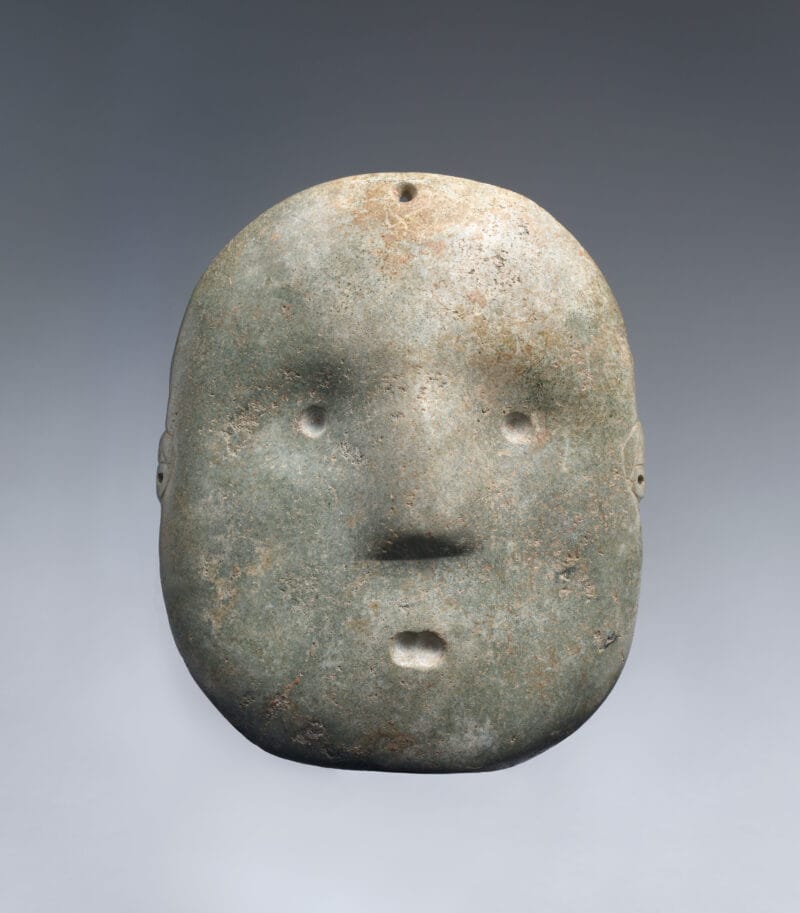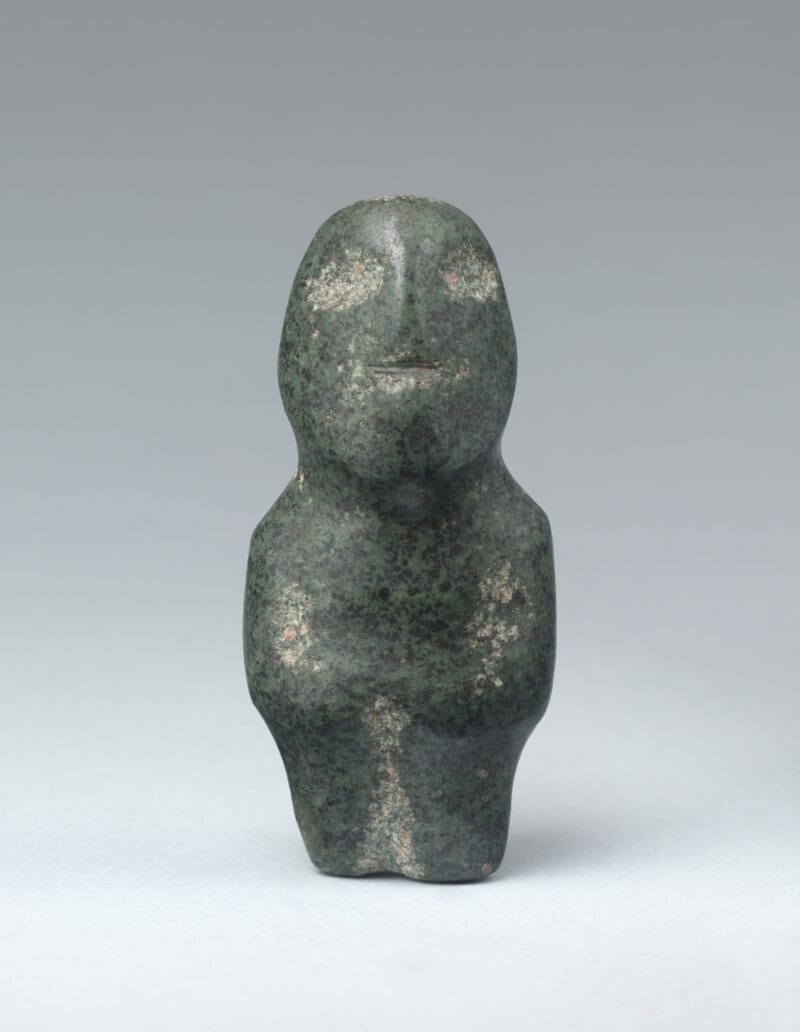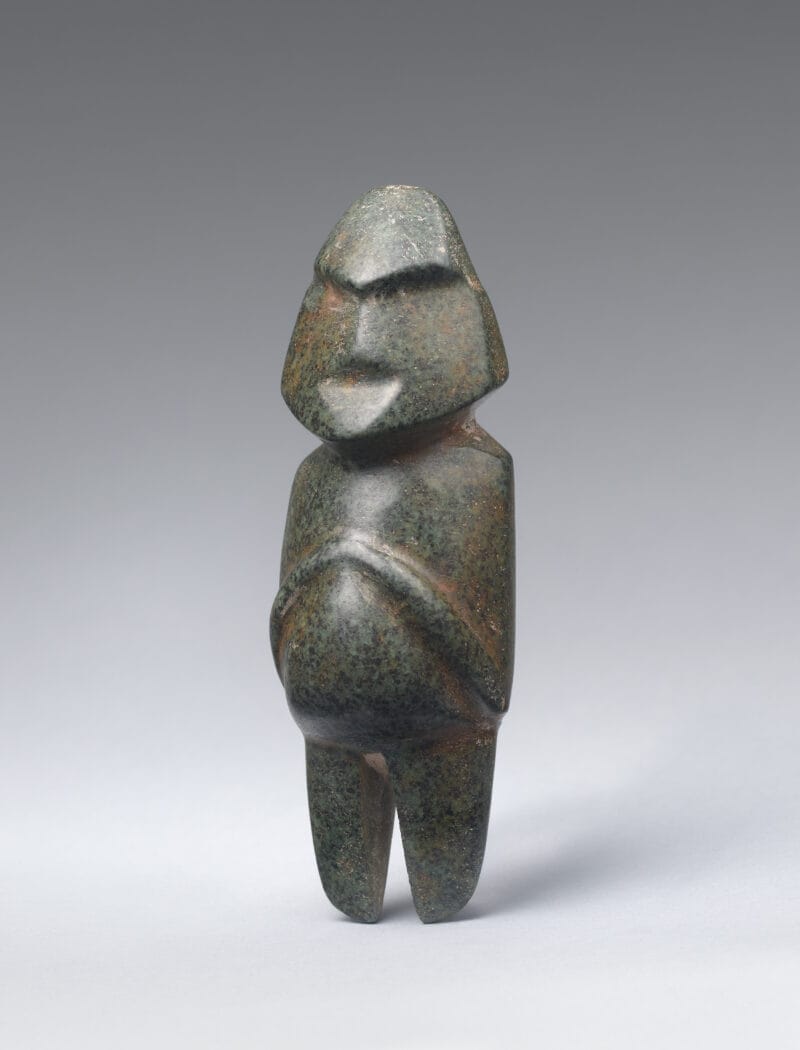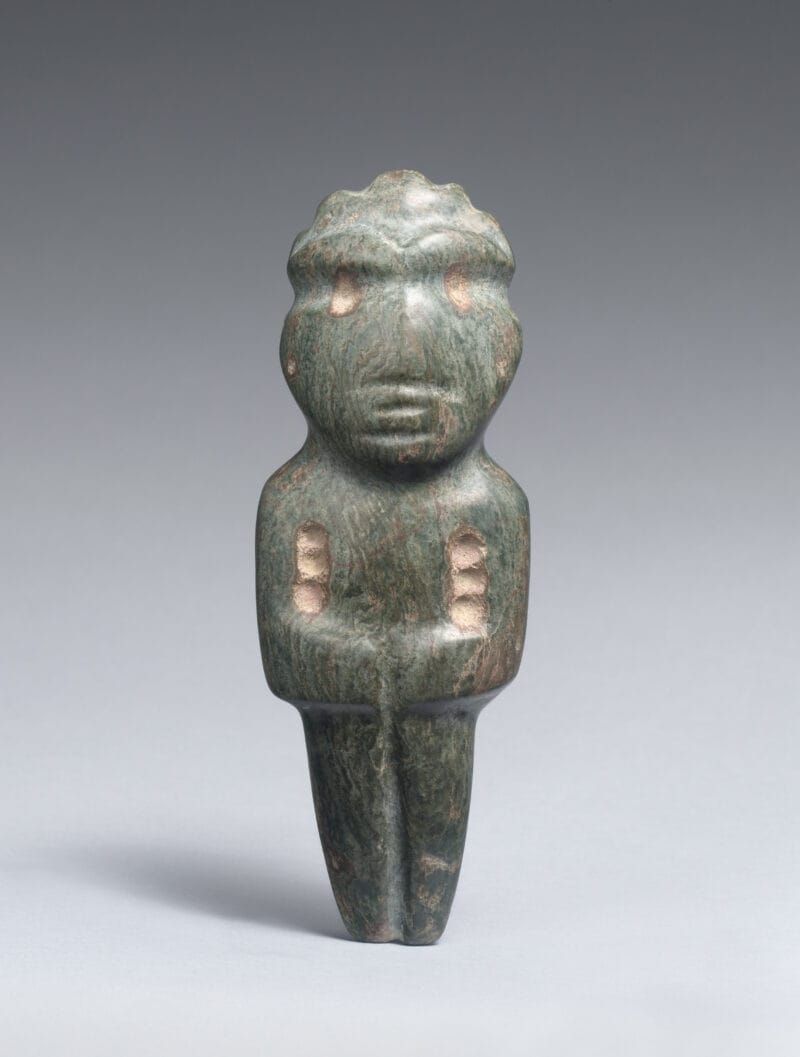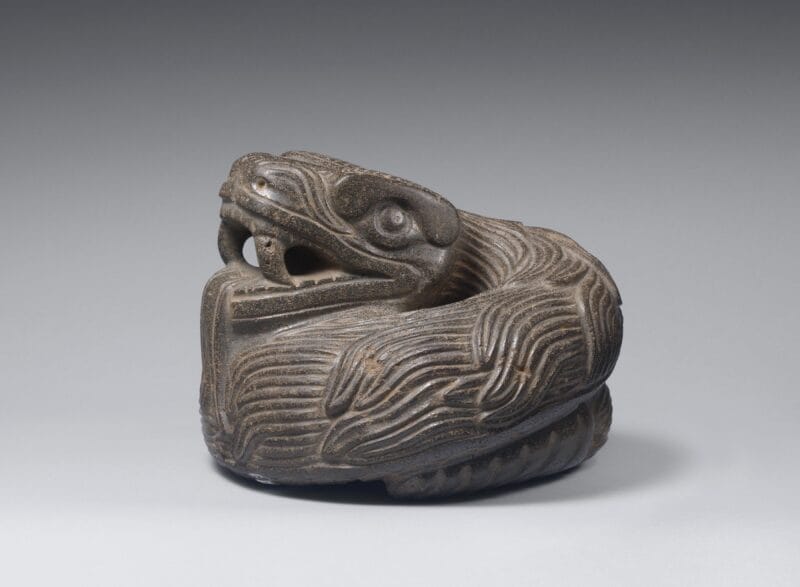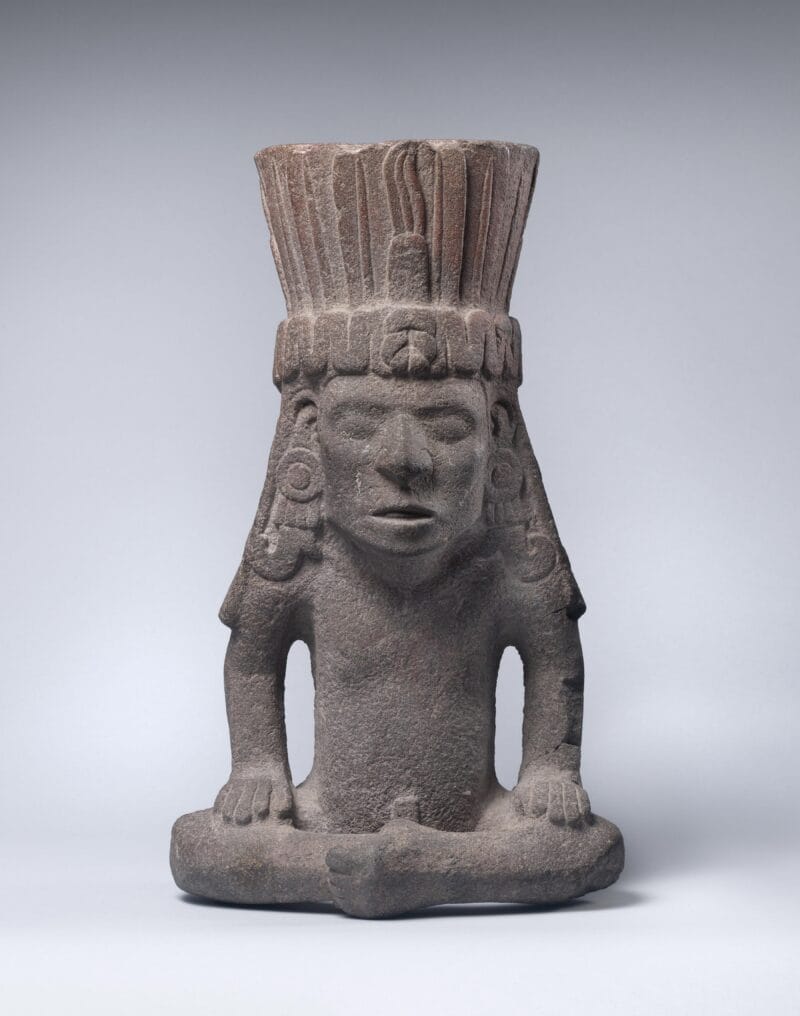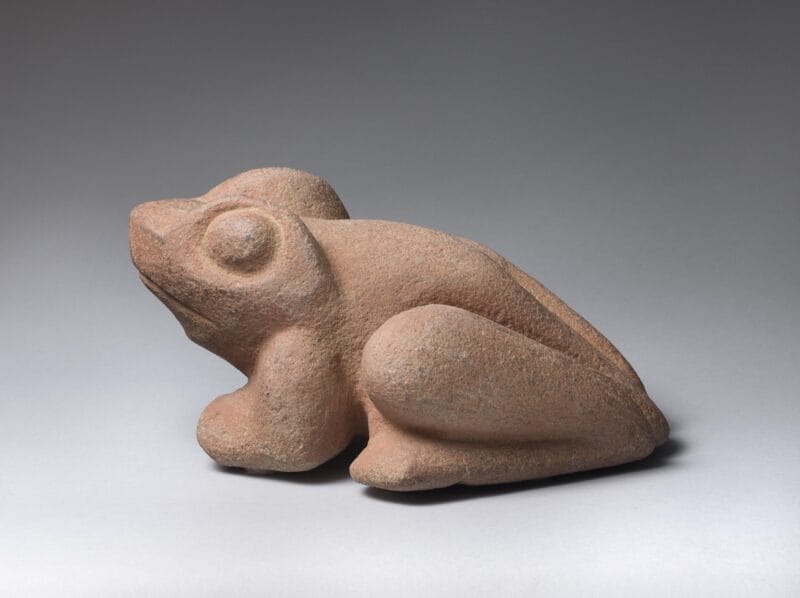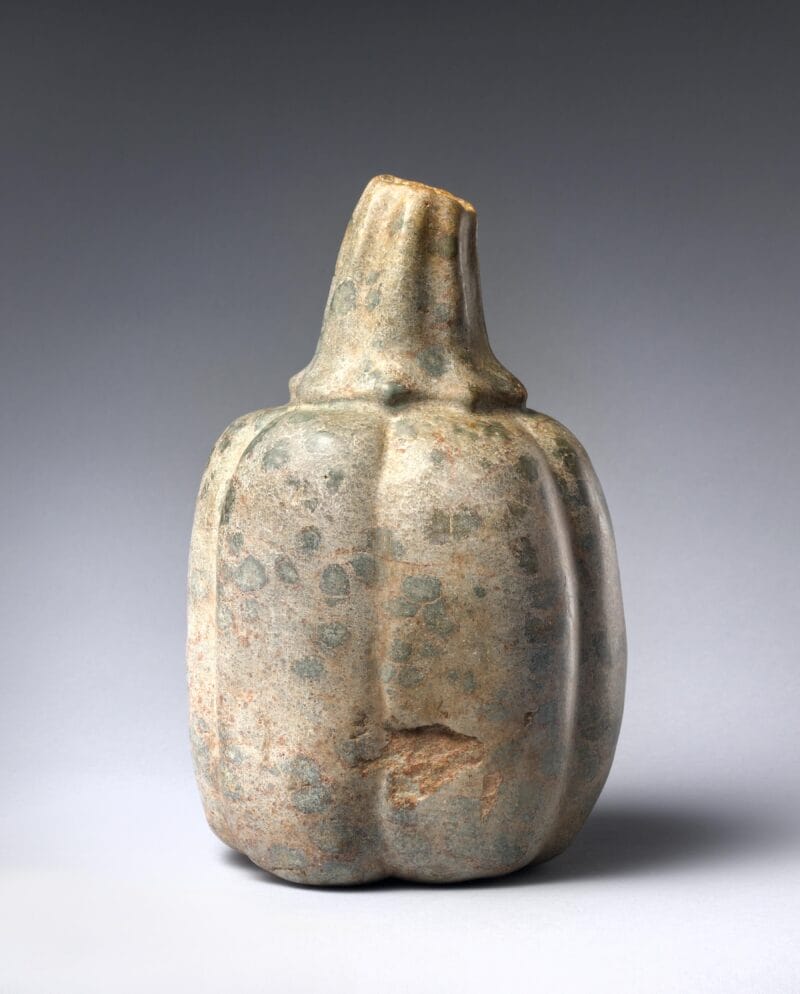
About the Object
This Mexica or Aztec portable sculpture carved from an unidentified green-gray stone depicts a squash, cocoa pod, or a gourd, with great care spent to capturing the natural appearance of a squash. This and other known examples of works depicting squash demonstrate the great value the Aztecs placed on the medicinal, nutritional, and practical properties of the squash they farmed and consumed. For instance, squash seeds were often paid as tribute to the Aztec government, while calabash gourds served as containers for liquids such as xicalli, which was used for chocolate drinks.
Additional Information
Using advanced agricultural techniques to create chinampas, or floating gardens, by which they gathered and shaped nutrient-rich soil from the lake bed into defined plots, the Mexica were able to reclaim land and achieve rich harvests that contributed to making Tenochtitlán (today Mexico City) one of the largest cities in the world. By the time Hernán Cortéz’s arrived in 1519 at what is today Veracruz in, in fact, Tenochtitlán with its vast networks of canals, large plazas, marketplaces, and pyramids was larger than any European city.
[Throckmorton Fine Art, New York, NY];
The Jan T. and Marica Vilcek Collection, 2007-2010;
Gift to The Vilcek Foundation, 2010;
Related Objects
You may also be interested in
Vilcek Foundation Awards $250,000 to Immigrant Artists

Guadalupe Maravilla: Healing Trauma Through Art

Iman Issa


